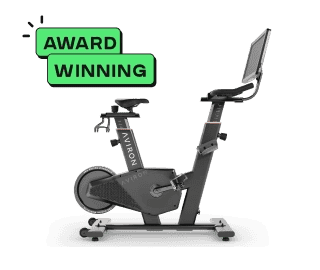Introduction: The Benefits of Rowing Machine Workouts
Welcome to the blog, where we discuss the advantages of rowing machine workouts for defining and toning muscles. We go over how rowing machines offer a thorough full-body workout by working several muscle groups at once. We discuss the benefits of rowing for calorie burning and cardiovascular fitness. By grabbing the reader's attention and demonstrating the possibilities of rowing machine workouts for accomplishing muscle toning goals, the introduction establishes the tone for the rest of the blog.
Understanding Muscle Toning and Definition
We go into the idea of muscle definition and toning in this part. We go over how achieving a more defined and sculpted appearance entails increasing lean muscle mass and decreasing body fat. We talk about how resistance training and healthy eating can help you tone your muscles. Readers can more clearly understand how rowing machine workouts aid muscular toning by outlining the objectives and expected results of this process.
Targeted Muscles in Rowing Machine Workouts
Here, we examine the particular muscle groups worked out on the rowing machine. We draw attention to the main muscles used, which include the quadriceps, hamstrings, and calves of the legs, the abdominals, the oblique, the latissimus dorsi of the back, and the biceps and triceps of the arms. We talk about how rowing machine workouts are balanced and help with total muscle growth and toning. Readers can picture how rowing affects their preferred muscle areas by comprehending the muscles involved.
Preparing for Rowing Machine Workouts
To ensure safety and efficacy, it is imperative to prepare for a rowing machine workout. We go through the significance of carefully assembling the rowing machine, adjusting the foot straps, and maintaining good posture in this section. We stress how important it is to dress comfortably and put on supportive shoes. Additionally, we offer advice on how to set up a favorable workout environment and deal with any potential hurdles or diversions. Readers may maximize their rowing machine sessions and lower their chance of injury by proper planning.
The Importance of Proper Technique and Form
To get the most out of your rowing machine exercises, you must use proper form and technique. The catch position, drive phase, and recovery phase are some of the essential components of proper rowing technique that are explained in this section. We go through the importance of breathing, posture, and body alignment while rowing. We offer helpful advice for keeping a fluid and effective rowing motion. Readers can increase the efficacy of their workouts and avoid unneeded strain or injury by concentrating on technique and form.
Warm-Up and Stretching Exercises
Before beginning a rowing machine workout, it is crucial to perform a comprehensive warm-up and stretching routine. We go over the advantages of warming up the muscles and boosting circulation in this part. We give illustrations of active warm-up exercises that concentrate on the rowing-related muscles. We also stress the value of stretching after exercise to increase flexibility and prevent muscle tightness. Readers can prepare their bodies for peak performance and lower their risk of muscular imbalances or injuries by including warm-up and stretching activities.
Rowing Machine Workouts for Muscle Toning
Here, we examine numerous rowing machine exercises made with muscle definition and toning in mind. We examine several training regimens, such as circuit training, interval training, and endurance-based exercises. We offer illustrative routines that concentrate on particular muscle areas or aim to tone the entire body. To promote muscular growth, we also talk about the significance of progressive overload and gradually raising the intensity and length of workouts. By offering exercise suggestions, readers can incorporate planned and successful rowing machine exercises to meet their muscle-toning objectives.
Progressive Overload and Muscle Adaptation
The notion of progressive loading is essential for muscular definition and toning. This section explains how gradually escalating the time, resistance, or intensity of a rowing machine workout encourages muscle adaptation and development. We talk about how pushing the muscles past their existing limits is crucial for promoting further development. We offer helpful advice on how to put progressive overload strategies into practice, such as raising resistance settings, including additional intervals or repetitions, or using advanced rowing techniques. Readers can continue to make progress and reach their muscle-toning objectives by comprehending and using progressive overload.
Incorporating Resistance and Interval Training
Using a rowing machine to improve muscular tone involves using resistance and interval training. In this section, we examine the advantages of using the rowing machine's resistance settings to build muscle strength and stamina. In this article, we'll go over how interval training, which alternates between high-intensity bursts and recovery intervals, can increase heart rate, maximize calorie burn, and work the muscles. To encourage readers in their quest for muscular toning, we offer sample resistance and interval training programs. Readers can increase the variety and intensity of their rowing machine workouts for enhanced muscle definition by implementing these training techniques.
Tracking Progress: Before and After Measurements
Monitoring development is crucial for assessing muscle definition and tone. In this part, we emphasize the significance of initial measures and ongoing evaluations of changes in body composition, muscular tone, and strength. We talk about the various indicators to monitor, like body measurements, body fat percentage, and strength increases. We offer advice on how to appropriately assess and document progress. We also encourage readers to journal and take images to record their adventures. Readers can maintain motivation and recognize their accomplishments along the way by keeping track of their progress.
Nutrition for Muscle Toning and Definition
The support of muscle definition and tone is greatly aided by proper nutrition. In this section, we go over the significance of eating a well-balanced diet with enough protein to support muscle growth and repair. We examine how healthy fats and carbs work together to fuel exercise and improve overall health. To maximize the results of muscle toning, we offer helpful advice on diet planning, quantity control, and timing of nutrient intake. Readers may increase their muscle toning efforts and improve their outcomes by providing their bodies with the proper nourishment.
Recovery and Rest Days
Muscle definition and toning depend on rest and recovery. In this part, we stress the significance of giving the muscles adequate downtime in between sessions. We talk about the advantages of taking rest days to avoid injury and overtraining. We offer advice on how to include active rehabilitation exercises like low-impact workouts, foam rolling, and gentle stretching. Readers may maximize their muscle-toning progress and maintain long-term sustainability in their fitness quest by giving recovery and rest a priority.
Common Mistakes and How to Avoid Them
This section identifies frequent errors people make when using a rowing machine to tone their muscles and offers advice on how to prevent them. We talk about things like exercising with poor form or technique, skipping a thorough warm-up and cool-down, overtraining without getting enough rest, and skipping a healthy diet. Readers may make sure their workouts are as safe and successful as possible by recognizing and correcting these common faults.
Before and After Success Stories
We publish real-life success stories of people who have used rowing machine workouts to remarkably tone and define their muscles to encourage and motivate readers. We highlight their experiences, the difficulties they encountered, and the tactics they used to succeed. Readers may see what is achievable with commitment and persistent effort by seeing these before and after changes.
Conclusion: Achieving Toned and Defined Muscles with a Rowing Machine
The main ideas covered in this blog post are outlined in the conclusion section, where we also reaffirm the potential of rowing machine workouts for muscle definition and toning. We place a strong emphasis on the value of consistency, appropriate technique, gradual overload, and healthy eating when it comes to getting the results you want. With the knowledge that they may get the toned and defined muscles they seek with commitment and effort, we inspire readers to start their muscle-toning journey with a rowing machine.
FAQ:
1. Can rowing machine workouts alone help me achieve toned and defined muscles?
Rowing machines tone and define muscles well. They strengthen and define muscles by engaging different muscle groups. Strength training and adequate nutrition can improve performance.
2. How long does it take to see noticeable muscle toning and definition with rowing machine workouts?
Depending on fitness level, consistency, nutrition, and genetics, muscle toning, and definition can take time. Rowing machine training, appropriate technique, and a balanced diet can increase muscle tone and definition in weeks to months.
3. Can rowing machine workouts target specific muscle groups for toning?
Rowing machines work the legs, core, back, and arms. Adjusting rowing tactics and adding targeted exercises can target specific muscle regions while providing a full-body workout.
4. Will rowing machine workouts make me bulky?
Rowing won't bulk you up. Rowing strengthens tones and endurance without hypertrophy. Lean and toned rather than bulky is the consequence. Genetics, training intensity, and nutrition may affect performance.
5. How often should I perform rowing machine workouts to achieve muscle toning and definition?
Fitness goals, current fitness level, and recuperation ability determine rowing machine workout frequency. Rowing 2-4 times a week with additional exercises can tone and define muscles. To avoid overtraining, listen to your body and relax between sessions.


